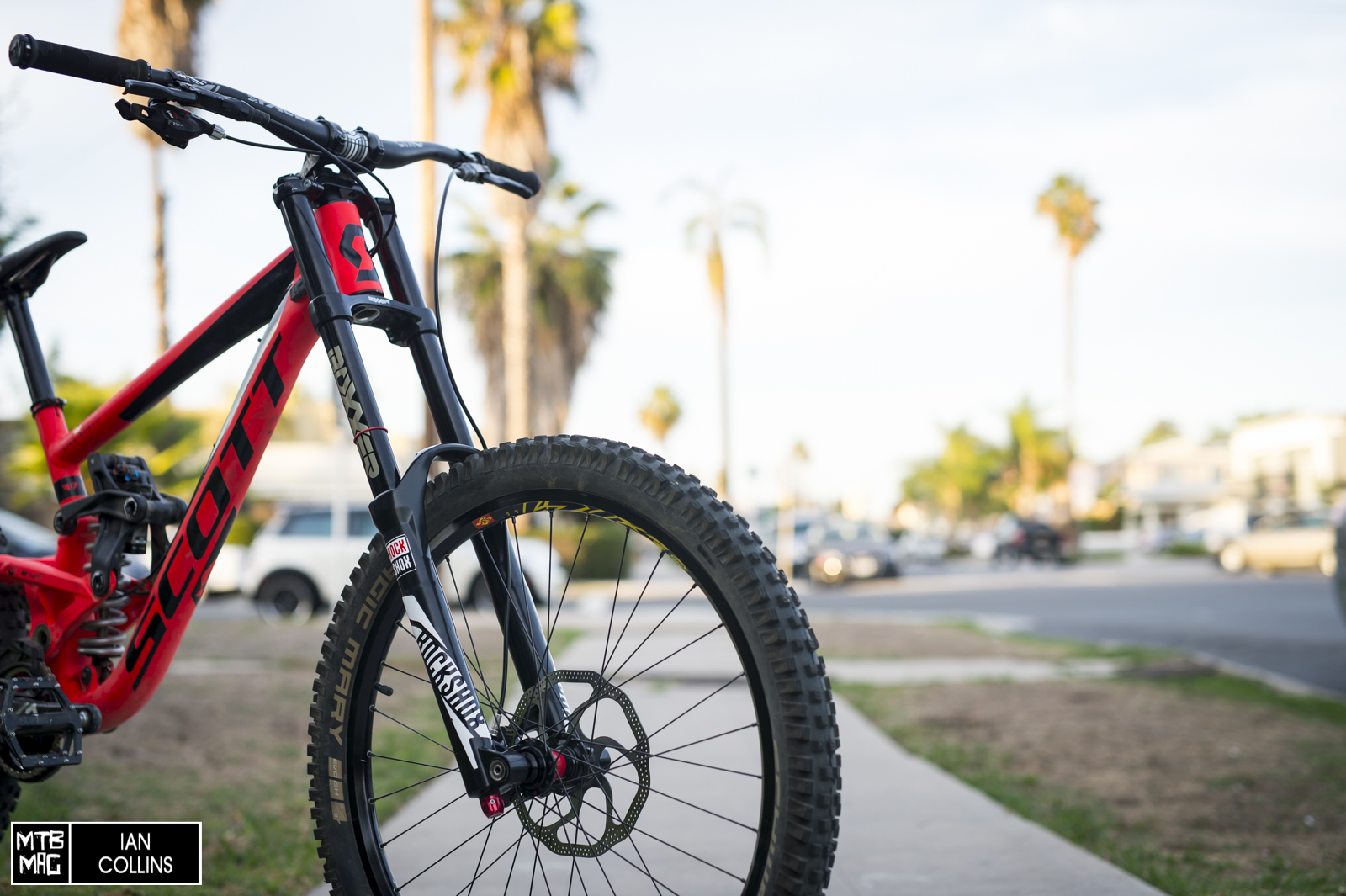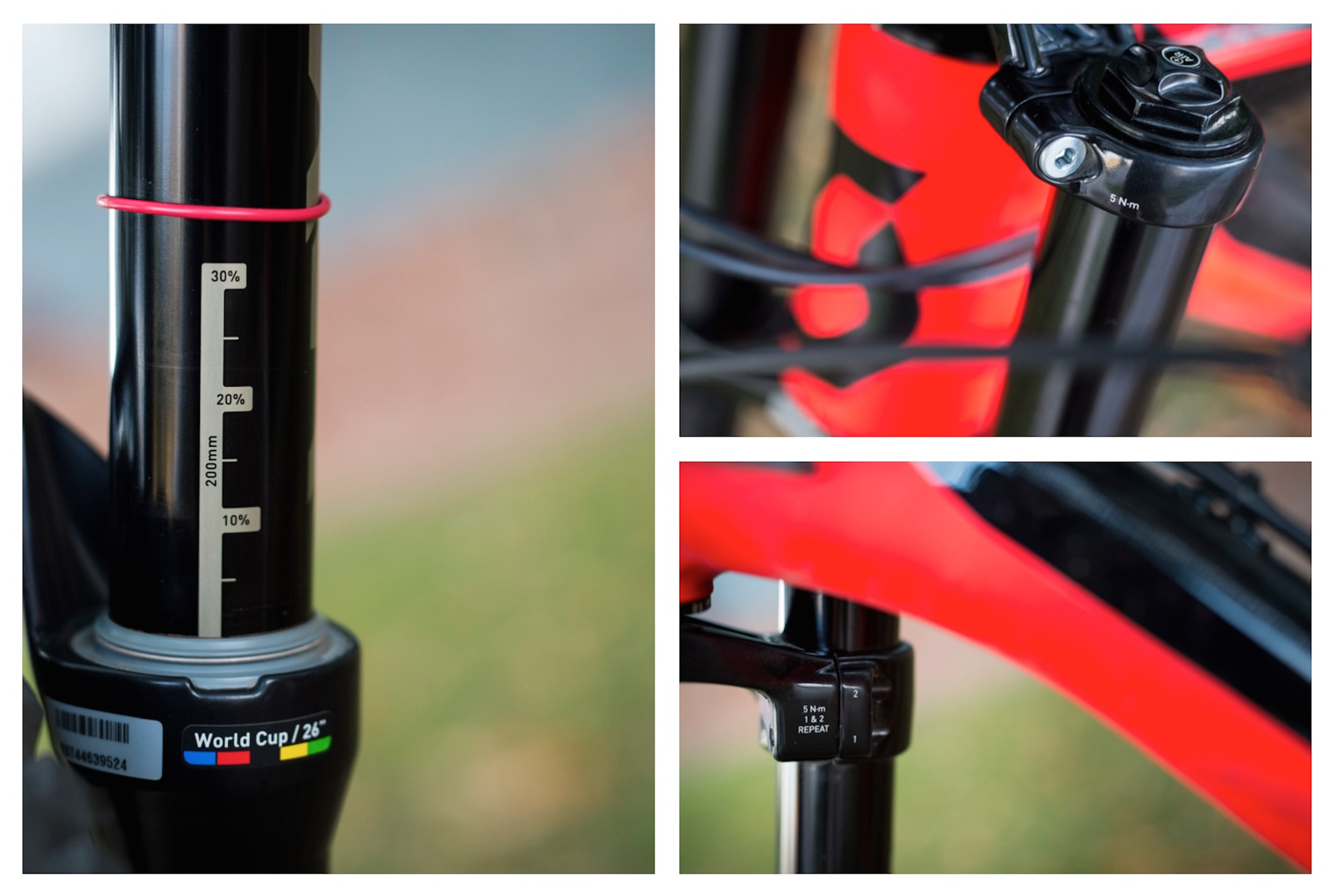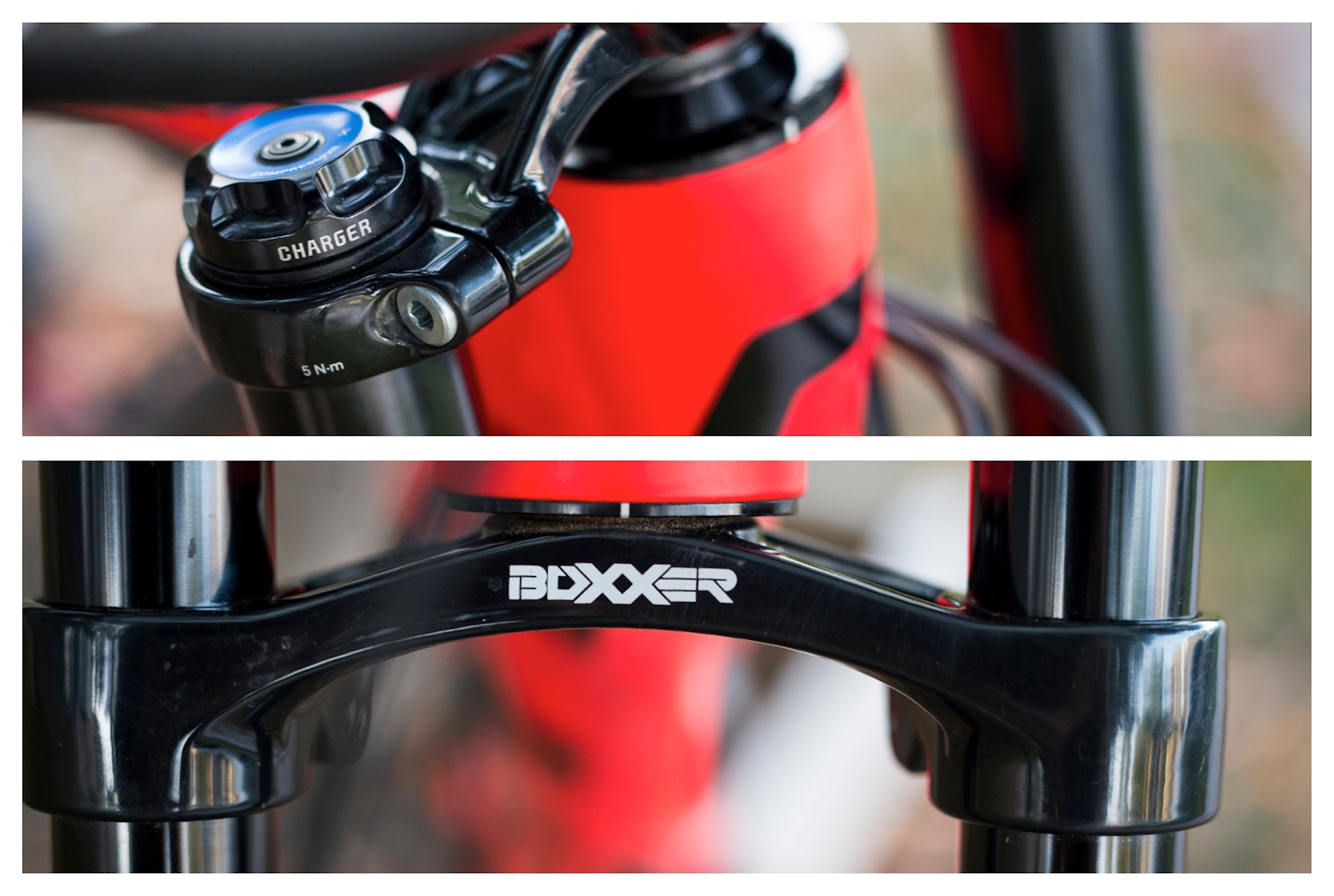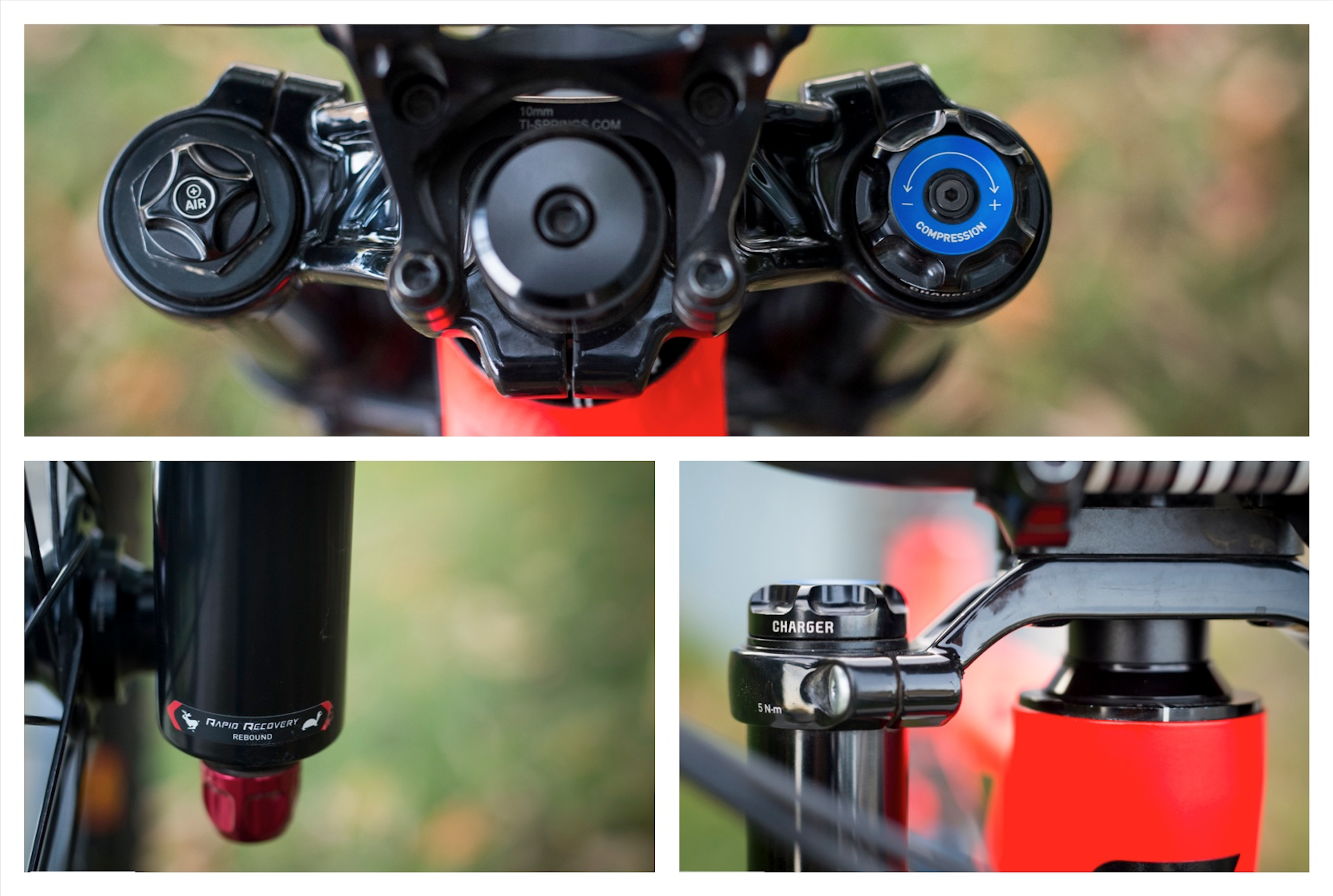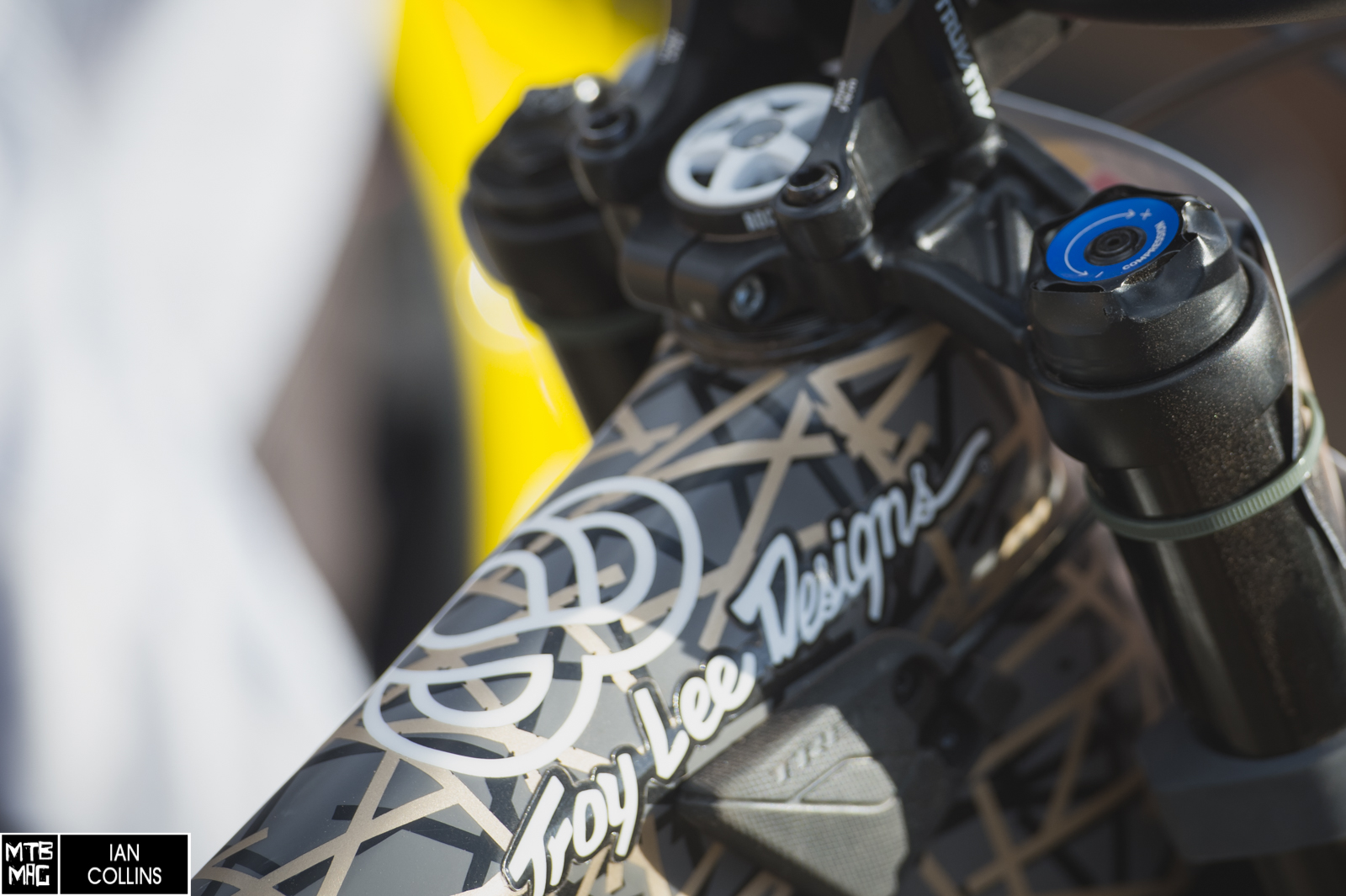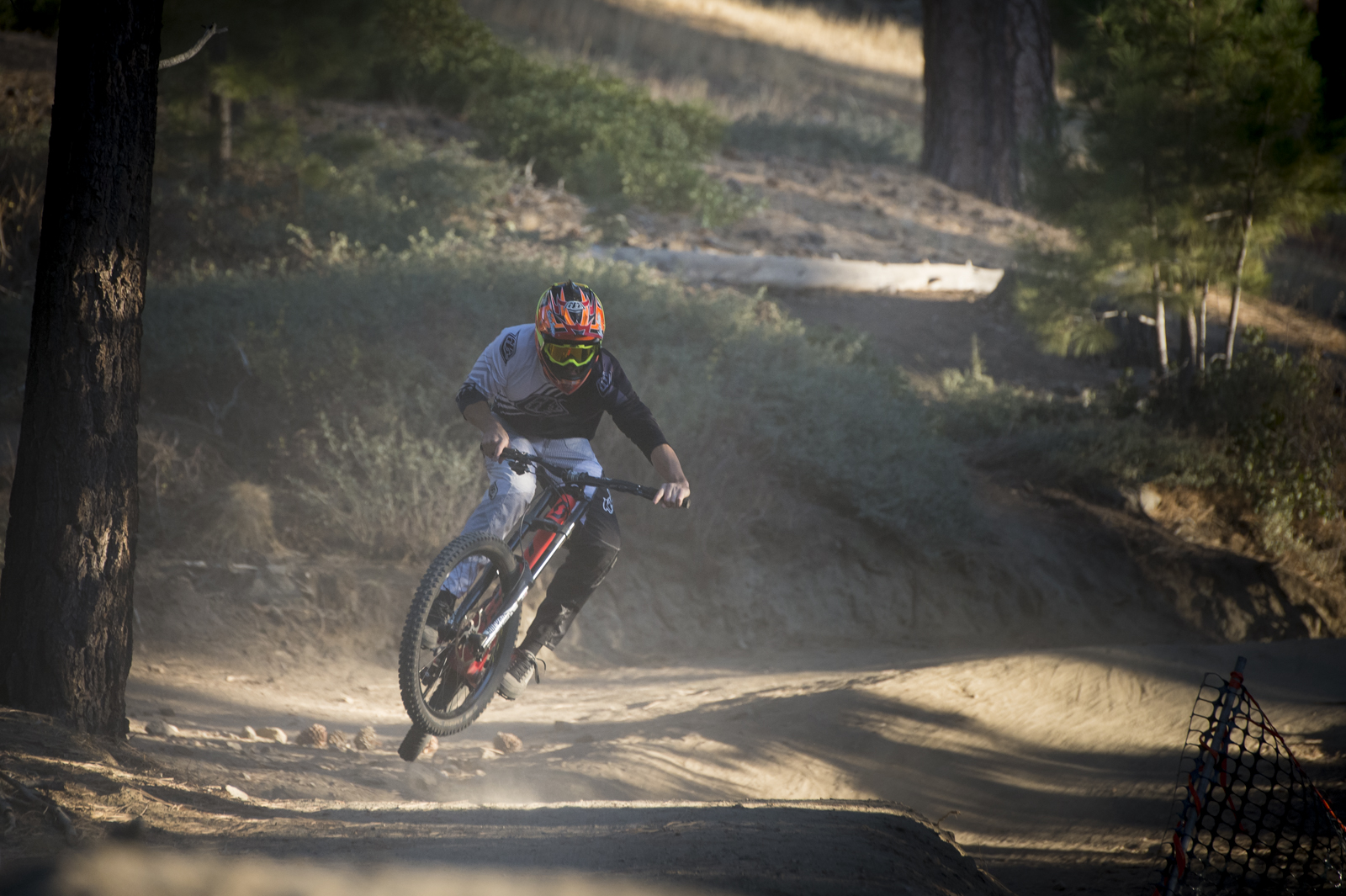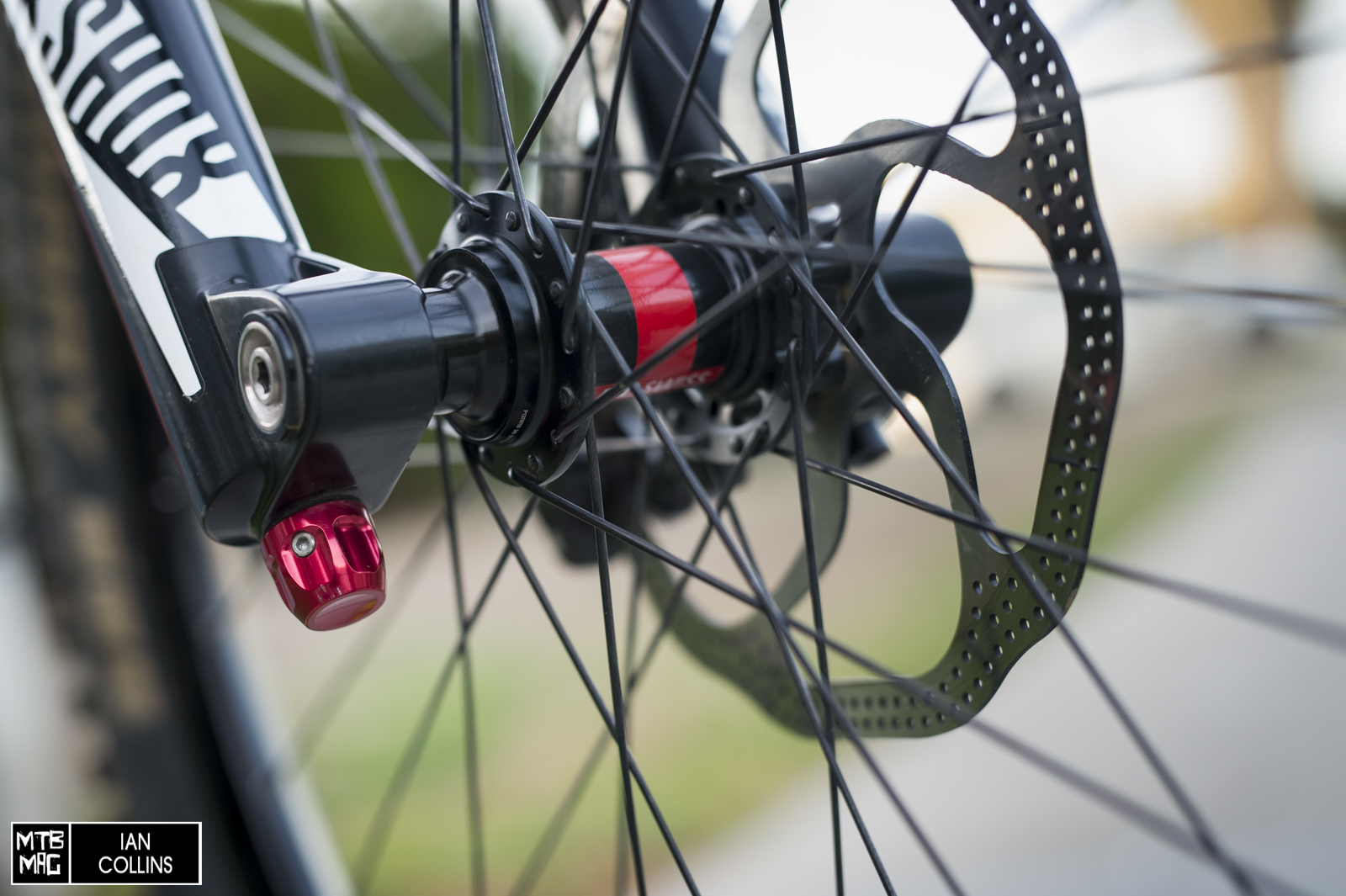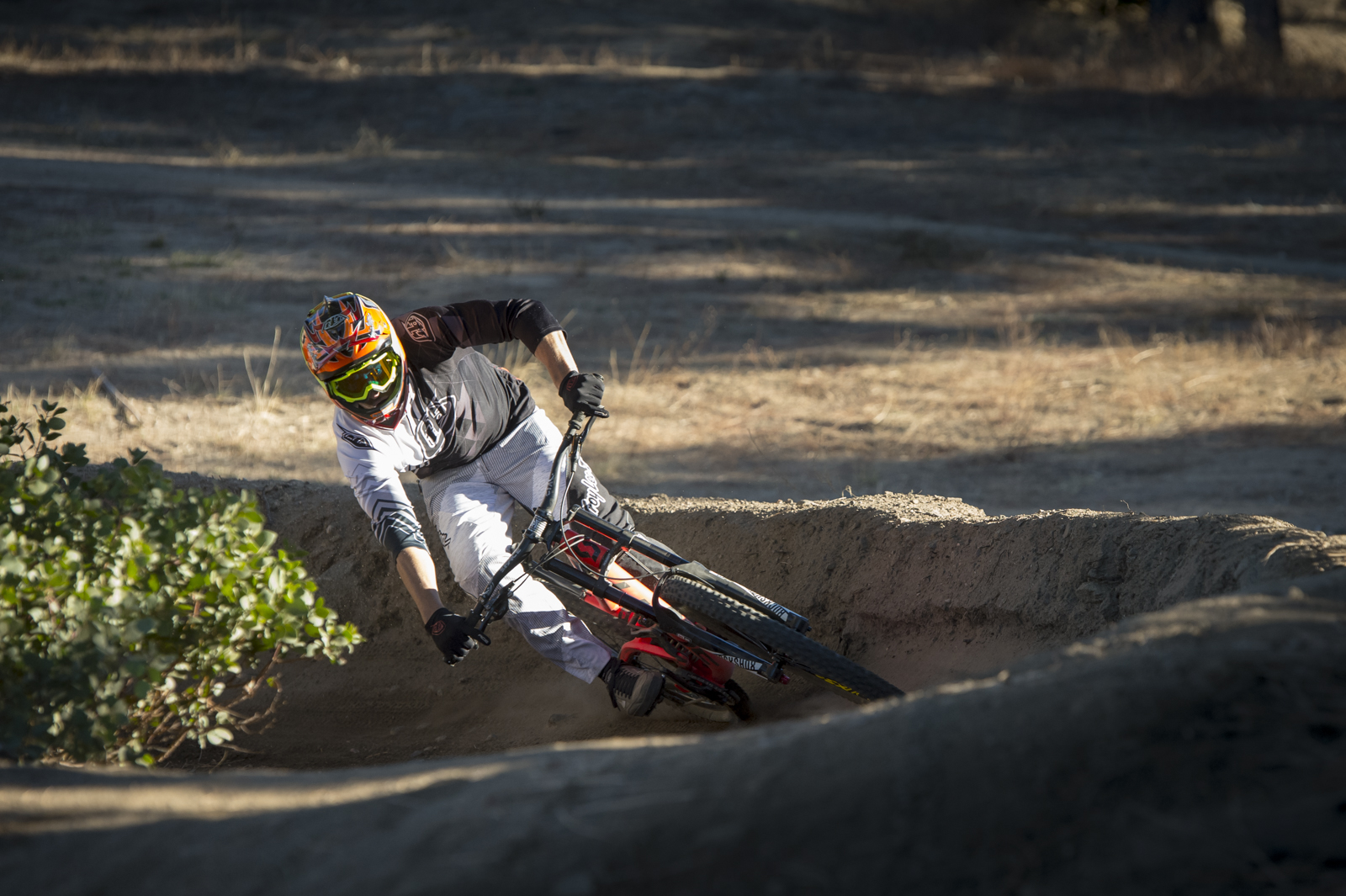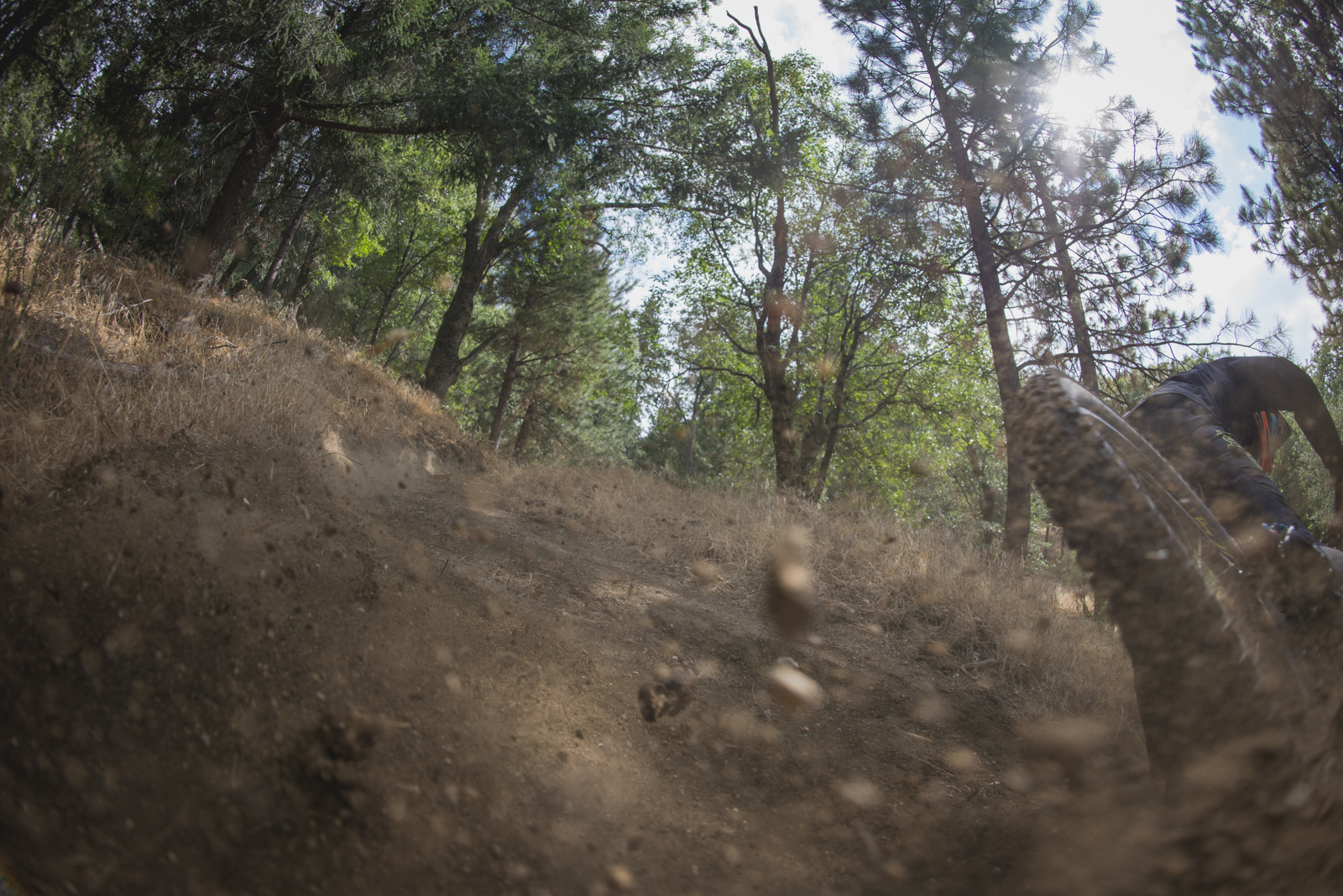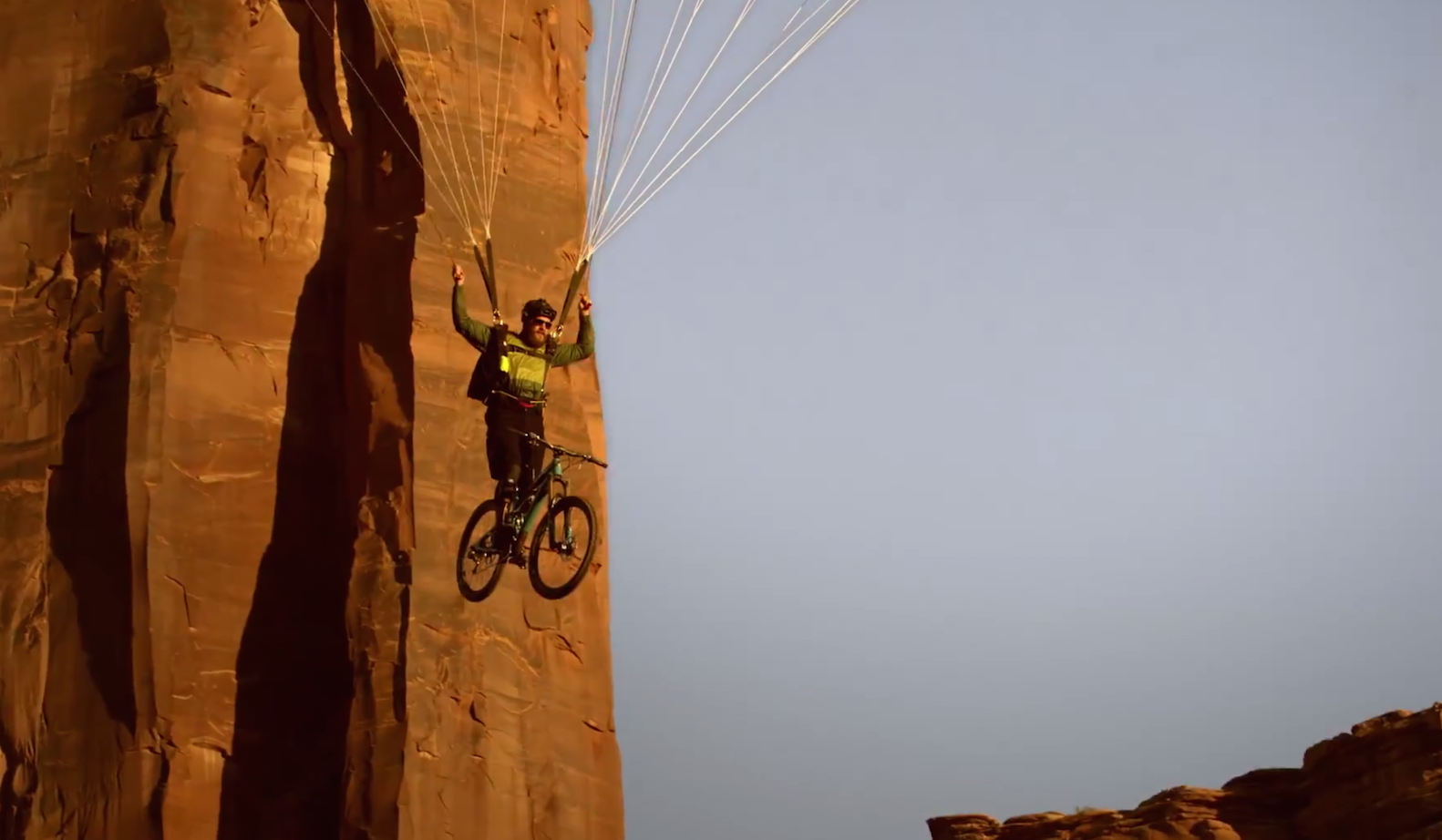It isn’t news to anyone that the Rock Shox Charger Boxxer has been one of the most anticipated forks to have been released to the downhill world. For quite a few years, World Cup downhill fans and gravity enthusiasts alike have lusted over the fork – watching it take win after win starting in September 2012 with Steve Smith’s epic first World Cup win in Hafjell, Norway at the season’s final round. Since then, Rock Shox have continued to elevate their game. For a quite a few years gravity riders salivated and wondered when the technology would finally trickle down and become available to them at a consumer level. This fall the fork became publicly available. We were fortunate enough to get our hands on one early in the Summer. Mounted on two different bikes for a bunch of laps at Whistler, countless runs at Snow Summit California as well as a healthy dose of shuttles on our So Cal test tracks, we’re ready to report to you on how the buzz worthy fork has been treating us.
Out of the box :
Right away, unless there is something wrong with you and you don’t appreciate sleek looking – all black bicycle components, you will take a liking to the aesthetics of the newest iteration of the Boxxer. We’ve listed some general specs at the bottom of the article, but when you pull the fork out of the box you will notice it’s freakishly light weight(2585 grams). Currently, it’s the lightest production DH fork on the market. As if a great track record and nearly sweeping the top 5 at Red Bull Rampage doesn’t speak highly enough about a fork – it’s low weight is the icing on the cake. How does it perform for normal humans though? Is it simply a product that caters to elite athletes, or is it adjustable yet simple – low maintenance yet durable enough for the regular Joe? Will it actually perform to a normal set of standards? Follow along as we give you the full scoop.
Chassis :
The current 26″ Boxxer chassis that we tested has been relatively unchanged since 2010. While other improvements are what really created the stir and made the Charger Boxxer such a well oiled machine, it is worth noting some of the subtle refinements made to the chassis which many might not know of. First off, the only visibly noticeable difference would be the hardware. While the axle remains unchanged, the pinch bolts which snug up the crowns and steerer have improved. They feature a higher grade material and larger heads, making them less apt to round out under a sloppy, meat fisted mechanic. Graphically the crowns not only feature etched in torque limits, but instructions on how to properly snug them down without damaging the stanchion tubes. The etched in sag indicator is not anything new from Rock Shox’ camp, but it’s warmly welcomed during setup as it does save a great deal of time.
What many may not notice is the accuracy of the Boxxer’s parts have improved greatly. Some time ago, when the Pike was first released, we had a chat with a Rock Shox tester who mentioned that the dramatic improvement in ride quality with the new offerings was largely due to more accurate tolerances straight from the factory. The most talked about features are things like the Charger damper and the Fast Black stanchions. However, a lack of binding and smoother action due to better alignment from the top caps, down through the bushings and into the dropouts also play a huge role in the forks highly refined new feel. It wasn’t as simple as coating the stanchions black and calling it a day.
Spring :
While we’re talking about an improved feel and better tolerances we may as well chat about the spring. The Solo-Air cartridge has received an update, and as mentioned before, better tolerances equate to smoother action. The pistons moving within the stanchions to create an air spring are no exception to this rule. The new stanchions do provide consistent, buttery smooth travel inside and out regardless of conditions.
On the inside, there has been a noticeable improvement to the way that Rock Shox executes the Solo-Air in terms of rate. As a stock fork, our World Cup Boxxer arrived with 1 Bottomless Token pre-installed under the air cap. With anywhere from zero to five of these stackable volume reducers the end user can fine tune the curve of the spring rate. With zero Tokens the Boxxer takes on a very linear characteristic on the trail. As you add more, the rate gets increasingly progressive – the fork becomes more supple in the initial travel and more resistant to bottoming at the end of the stroke. While there will always be exceptions, generally speaking the faster and more aggressive riders will opt for more tokens. Is this gimmicky? Or is it genuinely effective in helping the fork cater to all skill levels? At first we were a bit skeptical, but found it to be brilliant. After starting with the stock singular Token, we incrementally added them til we stacked four up. It’s worth mentioning that the fork comes with 3 Tokens – we swiped an extra from our Pike fork. Upon realizing that we’d never use full travel, we dropped back down to 3 tokens and never looked back. We can appreciate how a beginner rider would run less tokens, and while we are still scratching our heads that Graham Agassiz was running a full 5 tokens at Rampage, it makes sense given what he was doing out there. So, does this fork cover the entire consumer spectrum? Yes. Without question.
In regards to durability on the spring side, we haven’t felt any degradation or drop in performance that indicates we should rebuild the spring side any time soon. Not bad considering we haven’t touched it after 5 months of hard riding. We’re sure Rock Shox would have encouraged us to give it a rebuild some time ago, but that does serve as a testament to how little maintenance the new iteration of the fork requires. The prior versions of the air sprung Boxxer certainly demanded more frequent attention within the Solo-Air unit.
Damping :
With external beginning stroke rebound(19 clicks) and low speed compression(18 clicks) available at our finger tips we started fiddling with the settings. The fork’s adjusters have improved massively. While we still would prefer to have both high and low speed compression separately available at our finger tips, we did appreciate the improved dexterity in the actual adjusters themselves. The detents are easily recognizable yet really light in their action – easy to use with gloves or not, regardless of the conditions. Iterations in years past were sharp and difficult to move with vague feeling detents. This is a major improvement. In fact, one may want to consider Brandon Semenuk’s slick trick for keeping the compression adjuster guarded from the errant, unintentional adjustments.(pictured below)
So how did the Charger damper ride? Overall, we found it to be top notch. Starting up top, we settled into 10 clicks out from full closed in the low speed compression. As mentioned before, we generally like the option to independently adjust the high and low speed compression, but overall we found that it wasn’t really needed. The rate, mid stroke support and bottoming resistance were easily dialed in via the bottomless tokens, leaving the low speed compression as an effective way of fine tuning the fork’s suppleness. Our 180 pound tester found the high speed compression to be “just right” out of the box. While we can’t personally vouch for how the HSC would work out for say a 100 pound rider or a 250 pound rider, it’s worth noting that it is a speed sensitive circuit so it should adapt to each rider nicely. In extreme cases, the high speed compression could be internally re-valved to suit heavy or light weight riders accordingly, but we have a hunch it won’t be necessary.
On the rebound side, we settled at 11 clicks from fully closed. Not that much to report here. The “Rapid Recovery” rebound system did an incredible job of keeping our wheels glued to the ground in all conditions. If we were going from riding bike park jump trails to really rowdy technical trails, we never felt a need to have to fiddle with the settings to suit each trail. The fork was highly adept. We found this to be refreshing, and once we figured out the fork’s sweet spot it was a “set it and forget it” experience. The new damping system was consistent even after long descents, and never caught us off guard.
Hailing from Southern California, we can’t say that we tested the damper for consistency in super cold conditions. That said, it performed flawlessly throughout our 5 months of testing, and shows no signs of weakness on some chilly mornings at 7,000 feet without any notable changes in performance. Overall, the damping performance exceeded our expectations. Everything from braking bump chatter, baby heads and bomb holes to cases and G-Outs were handled with aplomb. Bottom line : this fork gave us an extra degree of confidence so that the front end of our bike wasn’t something we ever had to think about. It left us with nothing to focus on other than the fun in front of us on the trail ahead.
Stiffness(handling) :
Where do we start? To be honest, after coming off of a fork with a slightly beefier chassis we had our doubts that the Boxxer might feel a touch flexy in comparison. These days, DH forks are all over the board in terms of stanchion size and overall girth. We have 35mm, 36mm, 37mm and 40mm chassis options available. The Rock Shox comes in at 35mm making it the lightest weight and one of the least burly forks on the market. Did that adversely affect it’s handling and durability? No, not in our findings.
When it came to torsional rigidity (read : cornering) here is what we found…Having ridden another popular fork on the opposite end of the spectrum and finding that it deflected a bit much in rough, chattery turns, we welcomed the Boxxer’s subtle amount of “tuned in” flex and found it to be forgiving enough to save us during some hair raising moments. The fork tracked straight and true no matter how hard you smashed it into a square edged turn, yet in those moments where a jarring impact could catch you off guard mid-turn, the chassis was would give “just enough”.
In terms of fore and aft rigidity(read : heavy braking) we found the World Cup Boxxer to do a fine job – in fact we are quite impressed with it’s fortitude considering how freakishly light it is. Under hard, late braking at the end of steep chutes leading to hairpin turns this fork managed to get along just fine without any traceable flex. The fact that the spring and damping side did such a great job with mid stroke support and keeping the fork up in the travel certainly assists in this critical area.
Overall :
Overall, we’ve found the Rock Shox World Cup Boxxer to be the cream of the crop. While the fork isn’t cheap by any means, the value is there. We’ve spent time on a fork that comes in at a much higher price and isn’t all that much different in terms of performance. The cost : performance : weight ratio on this fork is the best you’ll find on the market. And if it comes in a bit too pricey, we have no qualms about suggesting the Boxxer Team. For $400 less and 300 grams more, you get the same great World Cup and Rampage winning chassis and damper. The only difference is that you end up with a tried and true coil spring vs. the air spring. If you’re really on a budget and want the much improved performance of the Charger damper, then you can simply drop one into your 2010-2013 Boxxer by grabbing the upgrade kit at your local bike shop. Despite mentioning those options we must say that the highly tunable and much improved Solo-Air spring is definitely worth splurging on. We’ve found that to be one of the best assets of the new World Cup Boxxer. It also happens to be a feature that saves quite a great deal of weight. However, once again, you won’t be left high and dry – you can also purchase that upgrade for $188 to drop into your current Boxxer as well. That being said, the bottom line is that Rock Shox’ latest flagship gravity offering should be the first fork you test out if you’re in the market to upgrade the front end of your DH rig.
PRICE: $1700 US
WEIGHT: 2585g
ADJUSTMENTS: External beginning stroke rebound, low speed compression
TRAVEL: 200mm
UPPER TUBES: 35mm, Tapered Wall Aluminum, Fast Black
LOWERS: Magnesium, 20x110mm Maxle Lite DH
More info on Rock Shox website

